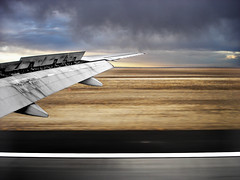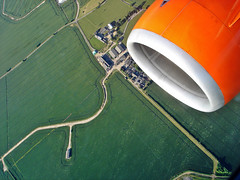how far do I go to get a photo the way I like it? the answer is miles. I was a designer first and a photographer second and so I have the designer habit of fiddling mercilessly until I think its as perfect as I can get it and then deciding I didn't mean to do it that way and then then having some kind of identity crisis about brand and perception and deciding that I've just visually misrepresented myself with the overuse of a high pass filter and I'll store the photo in a cardboard box until I decide its too late to post it. I mean, that doesn't happen every time, but it often does.
having said that, I know that there are many times where I'll see potential in a photo of mine which didn't really amount to much because I'm not particularly good at using my camera and then set to work on it. in 90% of cases, my aim is to frighten the life out of a perfectly reasonable exposure with the threat of filters, masks and crops until it submits everything it knows. after that, I'll spend a good few hours getting it to calm down and try to look presentable in the hope that when it gets posted to flickr, I'll get nice comments somewhere between 'nice capture!' and 'awesome!' by way of 'er, what did you do there?'.
a perfectly good example of that process is a photo I recently snapped (and I mean snapped, as in, almost didn't look at the camera while I waved it in the direction of the subject and hoped I'd not got some mad manual setting going on from when I was trying to take a picture of a dog under a blanket in the dark) of the london eye. after I'd got it home it was one of those RAW files that was just taking up too much space but there was something about it. compositionally, I quite liked it and it had clouds and some metalwork in it so there's alway potential there. it was a pretty lifeless photo though as the light was rubbish that day and there was hardly any contrast but that's not going to stop me having a go so rather than finishing off a flow digram for a organisational wiki that I was supposed to be doing I spent about an hour fiddling about in photoshop. the befores and after (we love before and afters) are below:
before View larger | after View larger |
whether you think they are tweaks too far or if you prefer the results or if you wish I hadn't told you that I'd actually mucked about with it or if you even prefer the original then that's up to you do decide and you can let me know if you feel compelled although if you are actually reading this then you're probably me.



